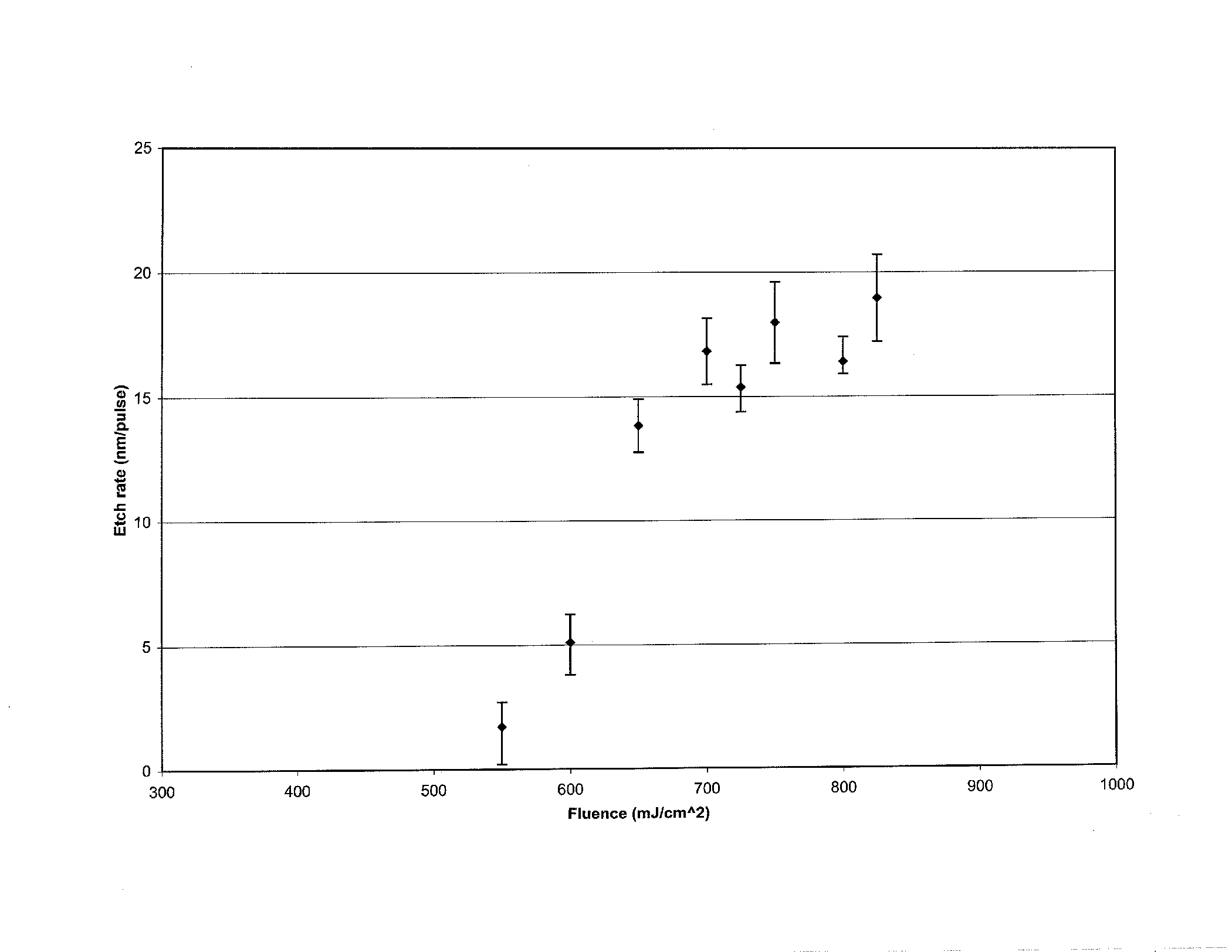Jonathan WintersteinWashington State UniversityProject Title: Laser etching of GaN
|
 |
Introduction
Gallium nitride is a semiconducting material with applications including blue LEDs and laser diodes and potentially transistors for other applications. GaN is resistant to chemical etching so other etching methods have been developed. Laser processing presents a potentially cost-effective and non-damaging alternative. I conducted several experiments studying aspects of laser etching of GaN during the REU program.Project Objectives
- Compare effectiveness of various HCl cleaning solution times and temperatures for removal of metal gallium left on laser-etched GaN surface.
- Study effect of HCl cleaning time on laser etch rate.
- Determine relationship between laser fluence (energy per unit area) on GaN etch rate.
Approach
- A KrF excimer laser with a 25 nanosecond pulse duration and homogenized beam was used to process all samples. Samples had 12.2 µm GaN layers on sapphire substrates. A 1:1 HCl to deionized water solution was used to clean residual gallium.
- To study HCl cleaning parameters, samples were irradiated once with a 800 mJ/cm pulse and then cleaned in HCl for times of 30 seconds or 5 minutes at temperatures from 27º C to 60º C. Optical microscopy was used to determine amount of gallium removed.
- The GaN etch rate was determined by irradiating samples 10 times with cleaning in between each laser pulse. To consider the effect of HCl cleaning time on etch rate, 50º C HCl solution was used between each pulse for various lengths of time. To study the relationship between laser fluence and etch rate, fluences between 550 to 825 mJ/cm2 were used to etch GaN samples. Samples were cleaned in HCl between each pulse. Profilometry was used to measure the amount of GaN etched.
Findings
- It was seen that 30 second cleaning in HCl did not fully remove gallium at any of the 4 temperatures. However, at every temperature save room temperature 5 minutes was sufficient to clean gallium completely.
- Etch rate data indicate that cleaning for even 30 seconds between laser pulses increases the etch rate by more than double that of samples not cleaned in HCl between pulses. As time in HCl was increased, the etch rate increased until an apparent “plateau” near the 2-3 minute range past which etch rate was constant.
- The data comparing fluence and etch rate suggest a threshold fluence in the range of 500-550 mJ/cm.2 A sharp increase in etch rate was observed as the fluence was increased from 600-750 mJ/cm.2 Following the sharp increase, a saturation point appeared as seen in figure 2 below.
 Figure 1: Optical micrograph of GaN surface after laser irradiation showing residual Ga on the surface. |
 Figure 2: Graph showing relationship between etch rate and laser fluence. |
Contact me: jon_winterstein@hotmail.com
